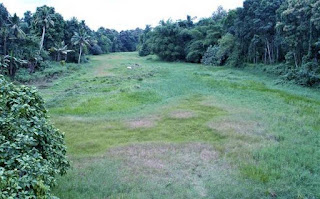E.M. Manoj, Kalpetta
The Hindu, May 12, 2017
The Hindu, May 12, 2017
An elephant census will be held in southern India from May 17 to May 19.
It is estimated that there are more than 6,000 elephants in the Wayanad, Nilambur, Anamudi, and Periyar elephant reserves of the State. The last census in 2012 had put the number of elephants at 6,177.
P.S. Easa, wildlife expert and coordinator of the programme, told The Hindu that along with Kerala, the census would be held in Tamil Nadu and Karnataka. “Elephants are migratory animals and cross over to the adjoining States, which may lead to overestimation or underestimation. Hence, the count will be conducted simultaneously with the three States,” Dr. Easa said.
A twelve-member core committee has been constituted for the programme. Amit Mallick, field director, Periyar Tiger Reserve, is the nodal officer and chairman of the team.
The census, involving direct and indirect count, will cover elephant habitats spread around 9,670 sq km of the 11,119.3 sq km forest area of the State. The direct counting method is based on sightings of elephants, while in the indirect method, surveyors follow a dung decay formula for arriving at an estimate.
As many as 641 select blocks, a block may be of six to seven sq km, have been identified in the State and a three-member team, including a watcher and two beat forest officers, will be engaged in each block.
As many as 120 resources persons have been trained for the census and they will train close to 2,000 field staff.
The direct count will begin on May 17 and the indirect count on May 18.
The third day will be exclusively for collecting information on population structure of the jumbos and will be in open areas where the pachyderms are frequently sighted.
The Periyar Tiger Conservation foundation will coordinate the census.
It is estimated that there are more than 6,000 elephants in the Wayanad, Nilambur, Anamudi, and Periyar elephant reserves of the State. The last census in 2012 had put the number of elephants at 6,177.
P.S. Easa, wildlife expert and coordinator of the programme, told The Hindu that along with Kerala, the census would be held in Tamil Nadu and Karnataka. “Elephants are migratory animals and cross over to the adjoining States, which may lead to overestimation or underestimation. Hence, the count will be conducted simultaneously with the three States,” Dr. Easa said.
A twelve-member core committee has been constituted for the programme. Amit Mallick, field director, Periyar Tiger Reserve, is the nodal officer and chairman of the team.
The census, involving direct and indirect count, will cover elephant habitats spread around 9,670 sq km of the 11,119.3 sq km forest area of the State. The direct counting method is based on sightings of elephants, while in the indirect method, surveyors follow a dung decay formula for arriving at an estimate.
As many as 641 select blocks, a block may be of six to seven sq km, have been identified in the State and a three-member team, including a watcher and two beat forest officers, will be engaged in each block.
As many as 120 resources persons have been trained for the census and they will train close to 2,000 field staff.
The direct count will begin on May 17 and the indirect count on May 18.
The third day will be exclusively for collecting information on population structure of the jumbos and will be in open areas where the pachyderms are frequently sighted.
The Periyar Tiger Conservation foundation will coordinate the census.










